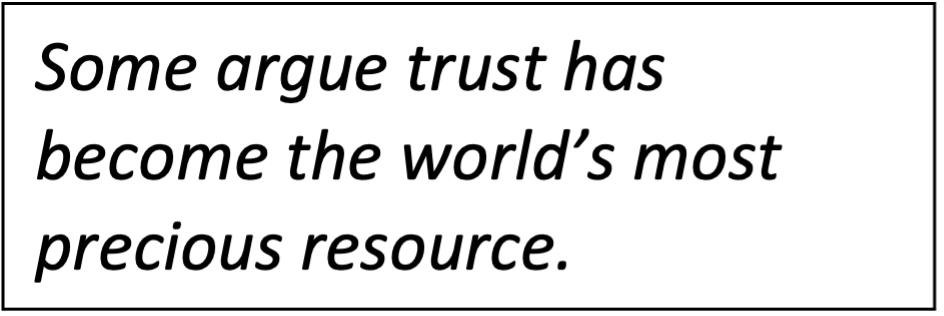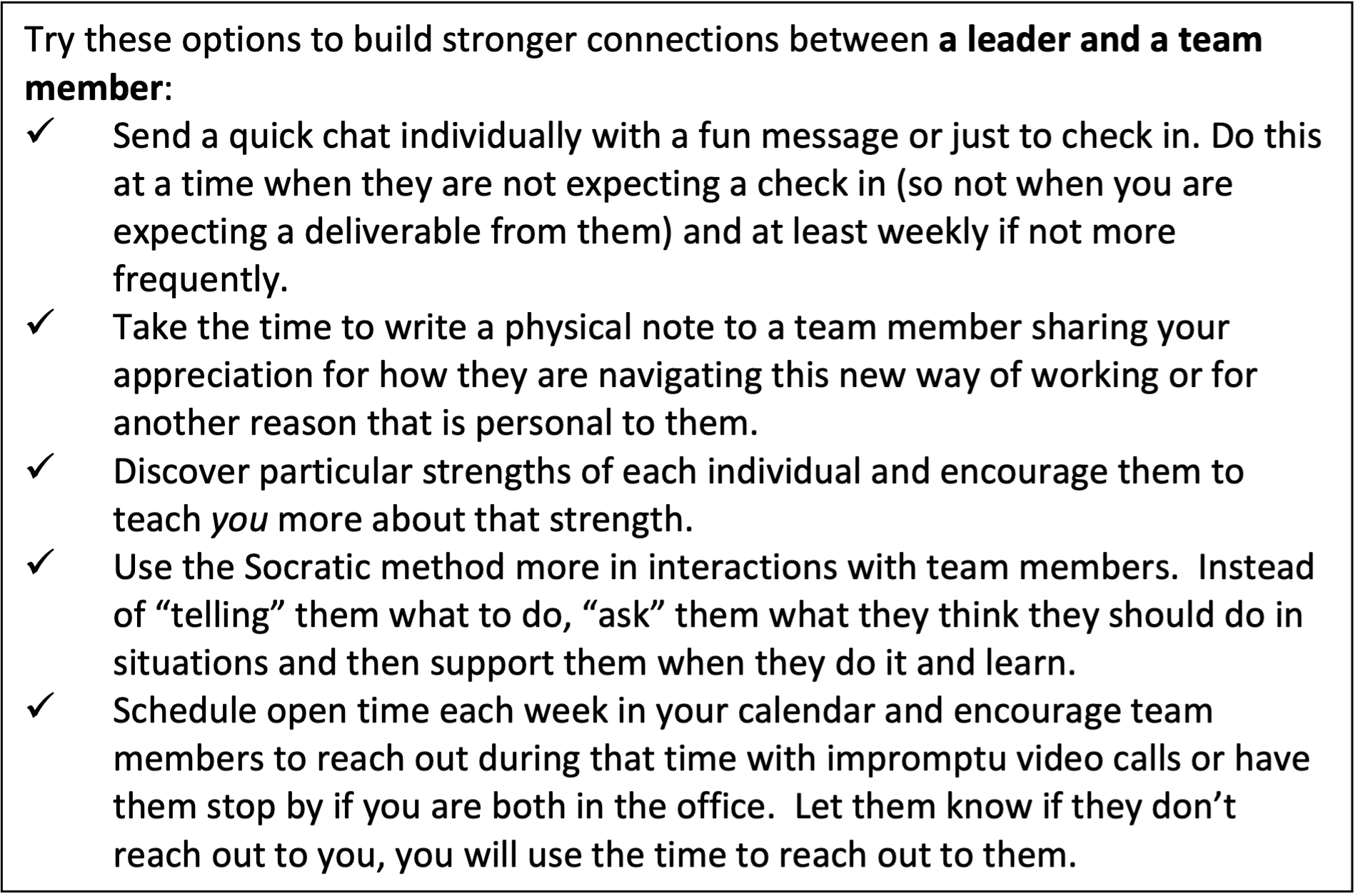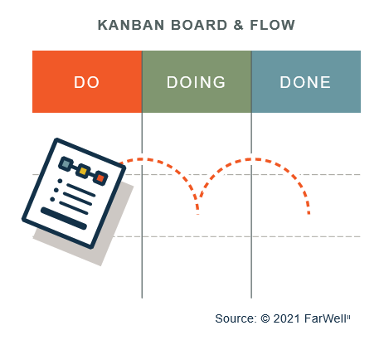August 13, 2021
Written By Rachel Breitbach
4 minute read
 Trust is an amazing and remarkable quality. Some argue that trust has become the world’s most precious resource. And for the last year and a half as we’ve been navigating through a global pandemic, it has become even more important yet more difficult to attain. In organizations where trust is strong, it feels as if you could accomplish anything, especially when implementing aggressive and complex change. Yet trust is remarkably fragile and easy to break. And once broken, it’s an uphill battle to regain its former strength.
Trust is an amazing and remarkable quality. Some argue that trust has become the world’s most precious resource. And for the last year and a half as we’ve been navigating through a global pandemic, it has become even more important yet more difficult to attain. In organizations where trust is strong, it feels as if you could accomplish anything, especially when implementing aggressive and complex change. Yet trust is remarkably fragile and easy to break. And once broken, it’s an uphill battle to regain its former strength.
That’s why building trust should be a priority for any organization or leader. Trust is a challenge to build when everyone works in a common location. It’s a few orders of magnitude more difficult when your team is hybrid with a part together and a part remote.
Given the growth of hybrid teams, a new approach to leadership is required. Specifically, leaders and organizations will need to rely more on building strong connections--not just individually with each team member but within their teams. This will build the foundation of trust and allow them to become more agile and flexible.
Build your connections with team members
It’s harder to stay connected when you and your team members aren't in the same place. With remote team members, you don’t cross paths in the cafeteria or have impromptu conversations outside a conference room between meetings. You also don’t want to alienate those who are remote if there are some who are able to work together again in a single location. The reality of today’s non-co-located work environments mean you must consciously plan to build connections.
These trust-building connections can be simple. They work best when you reach out to someone outside of what is expected or a regular communication channel. For example, occasionally use a regular business channel to acknowledge something personal instead of always focusing on work. This has been especially effective as more and more co-workers have been forced to share about their personal life given it is readily visible in camera views during virtual calls.

When you connect with your team members outside of regularly scheduled conversations like 1:1s or team meetings, you build stronger connections and create greater trust.
Building stronger connections also helps our teams become more agile with change. I’ve found many times that even if there aren’t robust change plans, if team members have a strong connection to their leader, teams will follow where they are led.
Encourage and enable team members to connect with one another
This activity can take many forms. One way is to connect a person struggling with a task with another team member who has the skills and experience to help them build their skillset. This way the struggling team member can resolve the current challenge and then add a tool to their own toolkit.
You can also help connect team members outside of the work environment. Maybe they share a hobby, a particular recreational interest, or something else they’re passionate about (e.g. book clubs).
Using some of the collaboration survey tools that are now more readily available, have team members ask prompting questions of one another that all can see, either about work or life. This builds a deeper level of connection and understanding about their life experiences, views and what makes them “tick.” Some examples include:
- What is that one “go to” tool that always works for you in a professional situation that others can leverage?
- What quote has had an impact on your life?
- What movie or TV show do you always seem to watch over and over again when you come across it, even if you’ve seen it dozens of times and why?
- Should a hot dog be considered a sandwich or not and why?

Define success differently
When team members are in a hybrid environment, it helps build trust if you redefine what success looks like for the entire team. Remote work allows people to incorporate more flexibility into how they work. Ensure that you also build that type of flexibility for those that are coming to the office. You don’t always have to follow a strict 9-5 physical workday for those coming into the office. Depending on the nature of the work, enlist team members to discuss when it is critical to be available for others to collaborate but allow them to also have some flexibility for physical activity, kids’ events or whatever else may be important to them without requiring use of PTO for these.
Be open and transparent when you communicate
Following this principle builds clarity and reduces ambiguity and uncertainty. Direct long-term benefits flow when you’re open and honest with your communication.
Use tools to reinforce the concept of open communication. For example, a Kanban board (see visual below) is a handy self-serve way for everyone on the hybrid team to have clarity around short-term accountabilities and deliverables. Everyone can see where they are with their tasks and everyone else’s status too. It’s good for general team trust and communication clarity.

Finally, assume good intentions and good will
As a leader there’s one guiding principle you should always follow: assume good intentions are behind every action and assume good will is part of every team member’s approach to his or her job.
Try and try again
Any one of these tips and tools is a step to greater authentic leadership. Greater connection and increased trust should follow use of the above approaches naturally. So, pick something that resonates, be open with team members that you are trying it out, and get their feedback to see if it is providing the desired effect. If not, try and try again. Just the mere fact that you are specifically focusing on continuing to build trust within your team will build connections. And with the increased trust, you will be able to help each other navigate the hybrid environment as well as other changes that occur daily in today’s landscape.
 Rachel Breitbach
Rachel Breitbach
As the Change Practice Lead and Sr. Advisor at FarWell, Rachel has over 25 years of experience delivering complex global transformation initiatives and helping organizations become more agile. She coaches leaders to fulfill their critical role to lead and support their teams through change, increasing their ability to adopt change. She regularly speaks on building an agile mindset and leading change. She enjoys watching her daughters play sports, being involved in her community, playing tennis and eating chocolate whenever possible!